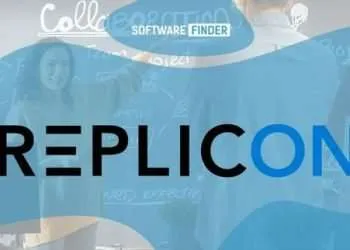Legacy software or application refers to a software program that is obsolete or outdated. Although these apps still work and serve their intended purpose, legacy software limits the capacity for growth. Usually, old software programs are unstable because of compatibility issues with new IT infrastructures, operating systems, and browsers. These apps run on older technology that may not interact appropriately with newer IT systems resulting in glitches.
Importance of Legacy Software
Typically, organizations stick with legacy software because it serves critical business processes. The challenge of using the legacy app is to keep it running while planning for legacy system software modernization or migration to a newer system that uses current programming languages and technologies.
Quite surprisingly, many organizations in various industries continue to use legacy apps. These outdated apps are everywhere: manufacturing companies, the energy sector, banks and financial institutions, hospitals and healthcare delivery systems, the defense industry, and more.
Organizations with business or production critical environments or processes that cannot be disrupted depend on legacy software. Some examples include manufacturing machines that run on MS-DOS, obsolete hardware in nuclear plants or legacy financial systems in banks. Although these software programs use antiquated technology, they still power essential business processes of numerous companies worldwide.
Companies continue to use their legacy systems for different reasons, including:
- They are aware of the limitations of the software, but they fear change, internal resistance, and potential disruptions.
- The cost to develop or upgrade the legacy application requires an upfront fee, both in the human and financial resources.
- The benefits of modernizing or replacing legacy software do not outweigh the cost.
- The company is not keen on retraining its key personnel on a new program.
- The software can be easily changed in the future if needs arise, so it’s best to keep the existing software until necessary.
- The program is too complex to be replaced.
- The legacy software may run in an outdated programming language, making it difficult to find talents that can initiate the migration.
While these are all valid points, companies should carefully weigh their options when deciding between legacy software upgrades or maintenance. The continuous use of antiquated software poses quite a few problems, including:
- The cost of keeping legacy software working can be expensive.
- The legacy system is not designed to integrate with other software solutions, resulting in data being stuck in silos.
- These software programs may not meet current compliance regulations, such as the GDPR.
- The data security measures of legacy software are also outdated, increasing cybersecurity threats.
- The legacy software may not interact with new technology, thereby limiting technological growth and competitiveness.
- These outdated software programs may lack maintenance and support.
Considering the rapidly evolving technology and highly competitive markets, companies need to invest in modernizing their software applications and systems. If the legacy software is unable to integrate with more recent platforms or software, it might eventually become a liability for your organization. Even when it is still working, maintaining such software will eventually catch up with you and bog down your processes.
Legacy systems become increasingly slower and inefficient, with more extended downtimes. Not only because of the antiquated technology it runs from but also because of the lack of support and maintenance. Usually, old software programs are being passed from one developer to another. As a result, legacy apps have numerous patches that increase their vulnerability to security breaches.
One thing is for sure: legacy software cannot be utilized and maintained forever. At some point, the company will upgrade its operating system, coding language, or IT infrastructure. Legacy modernization and migration are inevitable, and this process involves repurposing and refactoring the software program to keep up with new technologies and trends and realign with current business needs.
Legacy app modernization aims to create new business value from an obsolete application. Modernizing your software can have a significant impact on your business. You may either update your business processes and the changes with your legacy software or stick with your existing procedures. Nonetheless, it is essential to choose a reliable tech team to guide you throughout the legacy app modernization process. You want to make sure that the upgrades won’t compromise efficiency, scalability, and agility.
Remember that technology changes quickly, and companies need to stay competitive.








